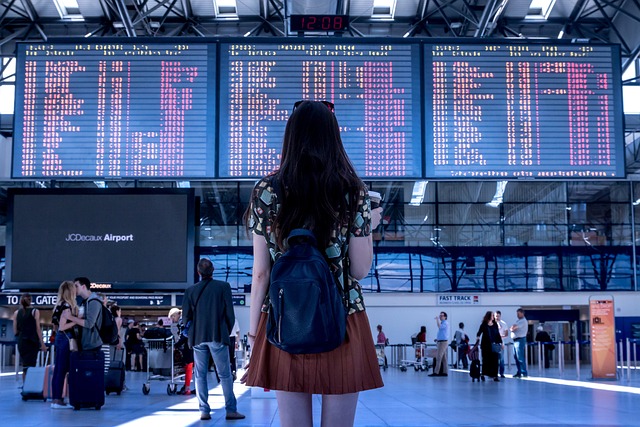by Maryam Henein, The Tenpenny Report:

I had a phenomenal time at the 10th anniversary of Anarchupulco in Bonfil, Mexico. This entry however is about how The Mexican International Airport, known as Aeropuerto Internacional Benito Juárez, is poisoning people all day, every day under – you guessed it – the guise of safety.
Last year for Anarchupulco, I flew directly into Acapulco airport, but because of Hurricane Otis, they stopped servicing international flights. Flights are now routed via the Aeropuerto Internacional Benito Juárez, which happens to be the primary international airport serving Greater Mexico City. It is the busiest airport in Mexico and Latin America, and the 17th-busiest airport in the world based on passenger traffic and aircraft movements. The airport handles an average of 132,000 daily passengers. That’s a lot of people being unnecessarily exposed to chemicals.
TRUTH LIVES on at https://sgtreport.tv/
I spent six hours in Terminal Two/ Sala H waiting for my connecting flight to Miami while people in Tyvek suits and respirators continuously sprayed the seats and the aisles. They even sprayed the kiddie area and I watched as a small child slid down a slide rife with the chemical solution, and then stuck his fingers in his mouth after touching the plastic. Lovely.
I was waiting with a friend I met at the event but when he left to catch his plane to Toronto, a Tyvek-suited woman got a bit too close to me with her electric backpack nebulizer and ultra-low volume micronizer. I immediately got up and started filming.
I tweeted the footage and it’s already gotten 10K, which is great for my censored self. Beware the expletives. Being sprayed by poisons is the Beelady’s worst? nightmare.
What was as shocking as straight-up spraying poisons, was how completely unphased the people around me were by all the hazmat suits. Personally, I suffer from multiple chemical sensitivities. Just because the sheeple people are oblivious to their surroundings doesn’t mean they aren’t getting poisoned.
A female airport employee came to ask me what was wrong. When I told her I was reacting to the toxins and that passengers were being exposed to poisons, she said the solution was ‘Para Limpiar (“for cleaning”) and rolled her eyes. I bee-lined for the bathroom and when I exited, she was just outside my stall. I felt as though I was going to get in trouble and given I’d discovered my gate had changed, I didn’t engage. I dashed instead from Gate B to Gate D. It was the first time I’ve run since I tore my meniscus last May 2023. I barely made the flight.
Hasta luego, Mexico International Airport.
Optics For Guinea Pigs
The day after I landed, I started feeling ill. As I write this, my body aches, my liver hurts, my head hurts, and I have the chills. By day two, I had developed a cough and phlegm and my nose bled three times. For the record, I haven’t been this sick in at least seven years and I never got in the Rona. I felt fantastic at Anarchapulco and was healthy and strong before I left for my trip. I’ve dedicated my life to alerting people to toxins, so what exactly are the powers-that-(shouldn’t)-be spraying?
I learned that SIFSA, with its exclusive pest prevention, fumigation, and control program, is the Mexican company that handles sanitization at the airport. SIFSA’s business model allows them “to maximize results using the most innovative methods on the market.”
Their supposed specialists are accredited by the health authorities (COFEPRIS) for disinfection and pest control. COFEPRIS stands for Comisión Federal para la Protección contra Riesgos Sanitarios: Federal Commission for Protection against Sanitary Risks and they are the authorities when it comes to controlling and regulating drug products in Mexico. COFEPRIS works with the Good ‘ol Environmental Protection Agency (EPA).
Their website flaunts that upon the launch of the Rona Regime, they adopted top-notch attack protocols. Except the coronavirus “emergency” is over so why are they still using over-the-top disinfectant tactics at the expense of passengers? Maybe because very few people pay attention, let alone speak out?
SIFSA is preventively disinfecting against any type of bacteria, germ, or virus that could occur in the various areas of the airport. Thank God (read: sarcasm), given airports are said to be ‘even germier than the average nasty plane bathroom.”
It was determined that the product “must be a high-spectrum microbicide and disinfectant, based on quaternary salts, and must be applied directly or through nebulization depending on the area.” Other criteria was to use a product that can be “safely used at a high-level, safe-to-transport, non-irritant, non-corrosive disinfectant that does not require rinsing and is not harmful to passengers, workers, users, plants, animals, and food.”
It all sounded like it was on the up and up but I knew better. Why weren’t the product name or ingredients listed on the site and why did it say that ventilation is needed when disinfection is completed? That airport did not have ventilation.
Read More @ TheTenpennyReport.com



